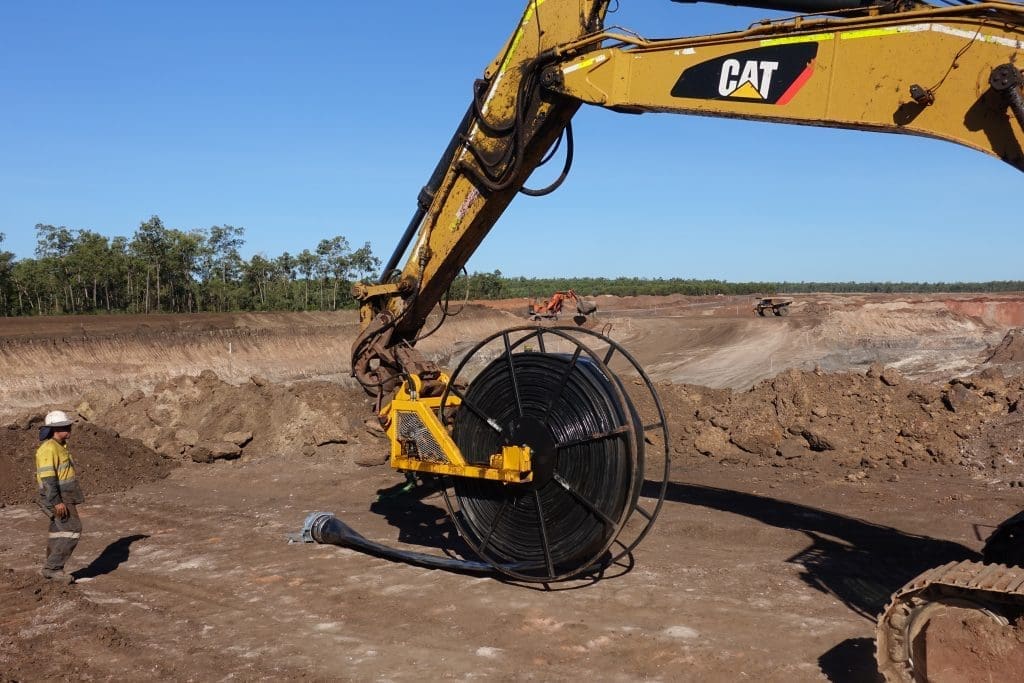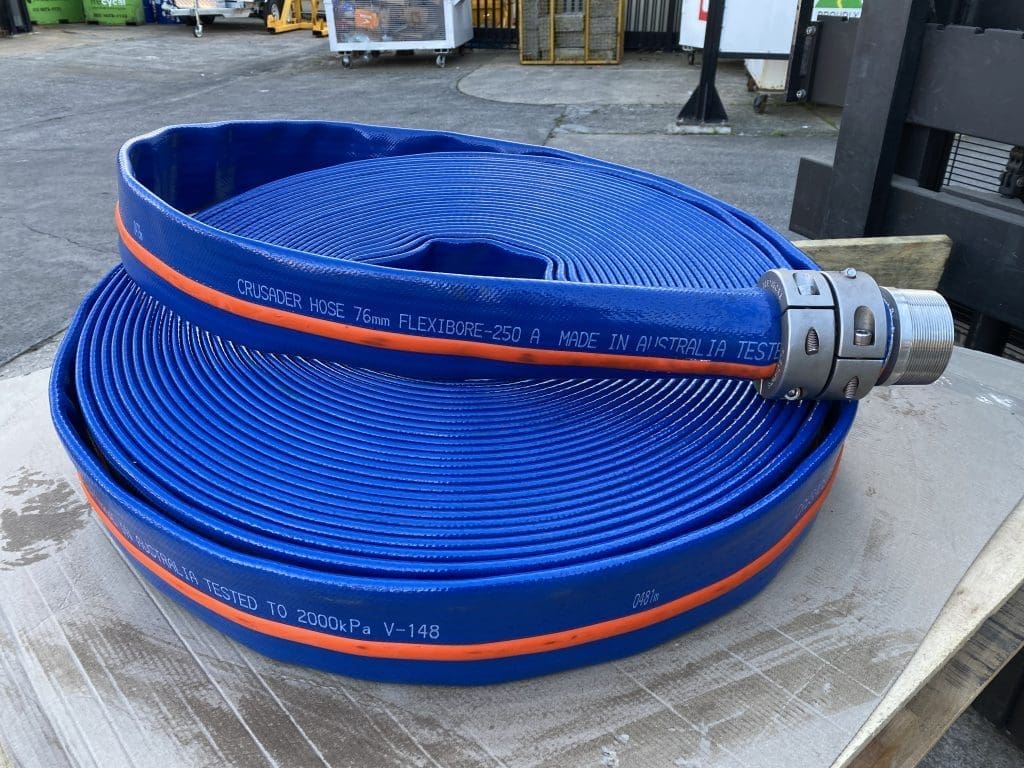
A cat-and-mouse game is a situation where the advantage constantly shifts between the competitors. With mine dewatering in the Pilbara region, the game is played between the water table and expanding open-cut pits. Crusader Hose offers the Hamersley Mine Dewatering system so mine engineers can maintain the advantage in the game with the right equipment.
Situations where actions involve constant pursuit, near captures and repeated escapes, are known as cat-and-mouse games. The competitors are vying for an advantage by taking action to outsmart their opponent, only to find themselves back where they started. Mine dewatering in the Pilbara region has been quoted as a game such as this. As the open-cut mine pits are expanded, the high water table slowly seeps through and needs to be pumped out, with more water seeping through with the following expansion. Managing the dewatering process can be costly and time-consuming. Fortunately, Crusader Hose offers a dewatering solution to keep costs down and reduce time.
The water table in the Pilbara region is relatively high, and open-cut pits are prone to filling with water. Keeping the water out of the pit is integral to mine water management. The typical strategy is to have in-pit bores with submersible pumps, which keep the standing water level down. From the top of the bore, the pipework connects to a large poly pipeline that can go for many kilometres to flow out to another unused pit or lower depression.

“It is a cat and mouse game,” said one dewatering operator to Francois Steverlynck, the MD of Crusader Hose, during his visit to a large iron ore mine in Western Australia. It was further explained how the water would re-enter the aquifer from the pipe outlet and make its way back to the mine pit, hence the cat-and-mouse analogy
Mine dewatering is a two-pronged approach; first, extraction of water from the open-cut mine pits, then second, transferring the extracted water to another area.
Removing the water from the open-cut pit is first facilitated with submersible pumps. Apart from the in-pit bores, many of the large iron ore mines also have permanent dewatering bores located around the perimeter of the large pit. These peripheral bores help keep the water table below the seams of the iron ore. Removing the water enables the iron ore to be extracted in the essential dry form. After a time, however, with continuous excavation and expansion of the open-cut mines, the in-pit bores need regular relocation.
Secondly, conventional bore water transfer systems are set up with poly pipe. Although very functional, once the mine expands and these pipelines need to be relocated to the next in-pit bore, it can be a time-consuming and costly exercise. Cutting and dragging long lengths of poly pipe across the mine requires additional equipment, time and a large workforce.
Flexibore®, the flexible rising pipe manufactured by Crusader Hose, is a trusted name in bore water pumping and has converted many engineers from using rigid pipe. Flexibore® can be deployed in much less time than conventional poly rigid pipe, increasing dewatering efficiency. It comes in a wide range of diameters to support bore depths of up to 400 metres. Skid-mounted generators and a flexible riser pipe make retrieving submersible pumps quick and easy, thereby increasing the proficiency of bore relocation. Crusader Hose has also increased efficiencies regarding bore water transfer in consultation with industry.

Crusader Hose, a company specialising in manufacturing high pressure and quality layflat hose, has had personnel visit mines across Australia and, therefore, understands the requirements for efficient dewatering systems.
“At the foothills of the Hamersley Ranges, where Lang Hancock discovered some of the largest iron ore deposits in the world, we are proud to have developed a new concept making mine dewatering less complicated – the Hamersley Mine Dewatering System using Waterlord® layflat hose.”
Francois Steverlynck, Managing Director of Crusader Hose
The Hamersley system was developed from experiences gained elsewhere.
“In 2002, we supplied the Australian Army with over 30 km of 152 mm diameter layflat hose to move fuel easily to frontline troops or aircraft, the Army is constantly moving, so they cannot use cumbersome rigid pipes.”
Francois Steverlynck, Managing Director of Crusader Hose
Having developed a layflat hose and reeling system for the Australian Army, Crusader Hose was then able to supply similar systems for large dewatering projects, including mine sites. Layflat hose can be easily wound up and redeployed when using the Hamersley system. A large reel mounted on a drive-unit can take up to 200 m of hose and then be driven over to the next bore. With this system, multiple reels can be used, allowing many kilometres of hose to be connected quickly and easily without having to dangerously drag or reweld pipe in the mine with trucks constantly driving by.
A recent success was supplying a brine transport system for Salt Lake Potash in outback WA. Over 15 km of 300 mm diameter layflat hose was used with the Hamersley system to pump the brine from evaporation ponds across the mine.
“We were able to deploy 1.2 km per day with only three operators. We also were able to take a longer and windier route across the environmentally sensitive ground without soil disturbance or disruption.”
Trevor Freight, the Dewatering Manager
The benefits of long-length layflat hose have not yet been fully appreciated by the mining industry due to its inherent handling challenges. Innovative businesses like Crusader Hose are solutions-driven and are helping the mining industry overcome the challenges of using layflat hose.
“Crusader Hose is fully committed to supplying complete systems. With the Hamersley reeling system, Crusader Hose is pioneering a new concept in mine dewatering in Australia, giving mines the advantage in the cat-and-mouse game.”
Francois Steverlynck, Managing Director of Crusader Hose
